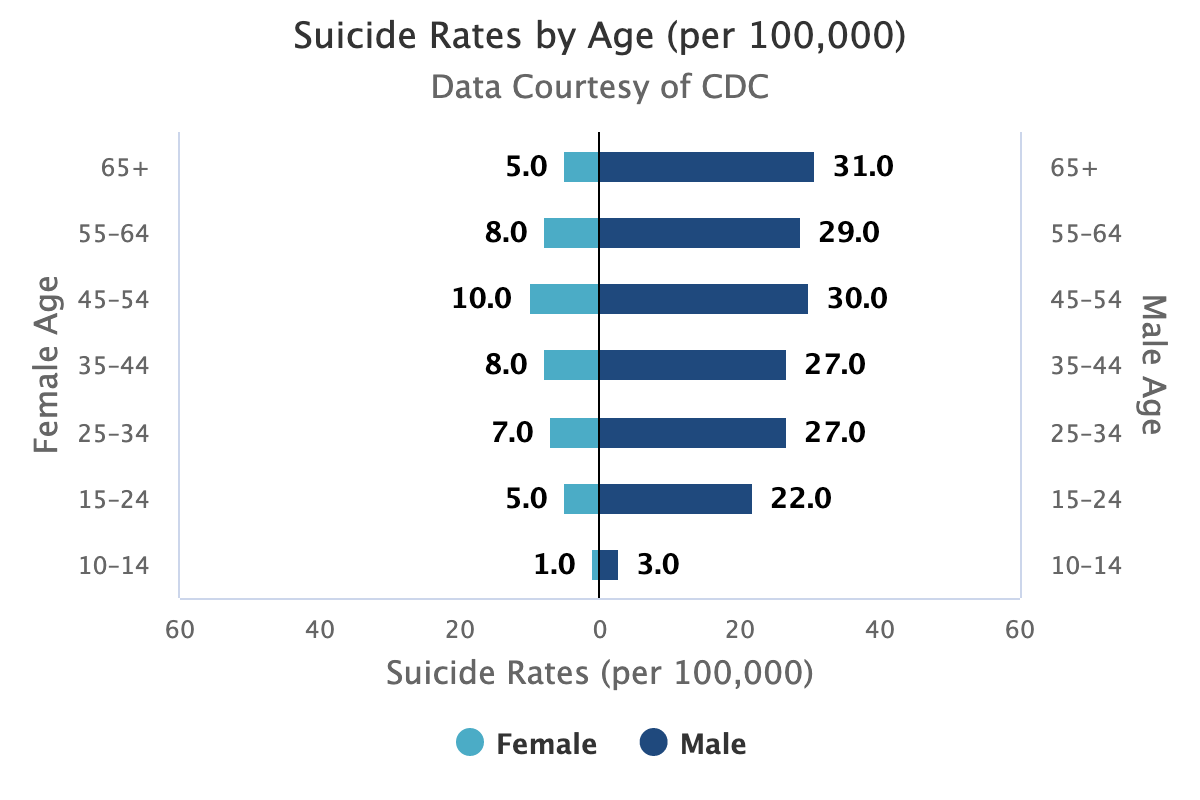The topic of connecting faith and mental health has long been a passion of mine, so when I look for inspiration on writing about the topic to support pastors and counselors, I usually find it in Facebook groups. Most of the time I am passively navigating the thread of conversations that youth pastors, Christians with mental health needs and Christian counselors are discussing. In the last four months, one significant and concerning trend has been the uptick in the need for suicide information, from "How do I work with my church after a church member committed suicide?" to "What can I do when I go visit a church member in the hospital after they attempted suicide?"
These posts have led to more group conversations, as well as individual talks with pastors one-on-one over video chat. Many people are uneducated about the topic of suicide and in scramble mode. As we know with mental illness, substance misuse, and helping people with special needs, the best way towards success is education and prevention. This led me to create the Church Suicide Prevention Policy where churches can use what we have written to put in their own policies and procedures manuals.
The Numbers on Suicide
Of course, suicide is more than a church issue, but a national and increasingly international issue. The title of a TIME magazine article on June 20, 2019 was "U.S. Suicide Rates Are the Highest They've Been Since World War II." This article was written in response to the Centers for Disease Control and Prevention's (CDC) newest dataset on suicide, titled Leading Causes of Death Reports. Some of the statistics drawn from this data include:
In 2017, 14 out of every 100,000 Americans died by suicide
Suicide was the tenth leading cause of death overall in the United States, claiming the lives of over 47,000 people.
Suicide was the second leading cause of death among individuals between the ages of 10 and 34, and the fourth leading cause of death among individuals between the ages of 35 and 54.
There were more than twice as many suicides (47,173) in the United States as there were homicides (19,510).
The American Foundation for Suicide Prevention and National Institute of Mental Health came up with some great visuals about suicide. Click on these links to see interactive versions of the graphs.
The Church's Response
Dr. Grcevich talked about eight possible reasons for the suicide epidemic last year. But what can the church do to combat this scary, growing trend? We need recognize the full scale of how someone who commits suicide touches the lives that care about this person.
Larry VandeCreek, Kenneth Mottram, and Kathleen DeMey wrote an article in the Journal of Psychology and Christianity titled "Religion During Suicide Bereavement: Literature Search Results and Recommendations for Additional Studies" where they discuss this impact:
The social repercussions of a suicide include stigma, a diminished availability of support, family disruptions, and being at risk of developing a complicated grief syndrome. This social and psychological pain also increases the risk of the loved ones committing suicide themselves (page 37).
We know that reducing mental illness stigma and prevention are the techniques with the most impact. This not only helps undo misunderstandings, but creates a strong cognitive resilience and educated support network within the church to create a better culture for those with mental health disorders and special needs.
My own church's response to fighting stigma was to preach about mental illness for a month, provide resources for local counseling centers as well as educational material from the National Alliance on Mental Illness' local chapter. We also created a mental health team that would connect with people who needed support, as well as oversee small group integration with mental health. Further, I have begun to develop mental health awareness cards for churches to use as awareness and educational tools, integrate Christian faith and Scripture, and also allows for connections between people who are suffering and people who want to volunteer.
We also need to continue to pray, engage, and give time and resources to integrating mental health inclusion ministry, as we continue to engage with our congregation and community. It requires intentional effort, to see people as people and share the Gospel to those who need salvation.
What have you seen Christians or churches do to bring hope before and after a suicide event?
Jeremy Smith is a clinical mental health counselor in Ohio and founder of www.churchandmentalhealth.com.








